Dechang Pi
Semi-supervised Training for Knowledge Base Graph Self-attention Networks on Link Prediction
Sep 03, 2022


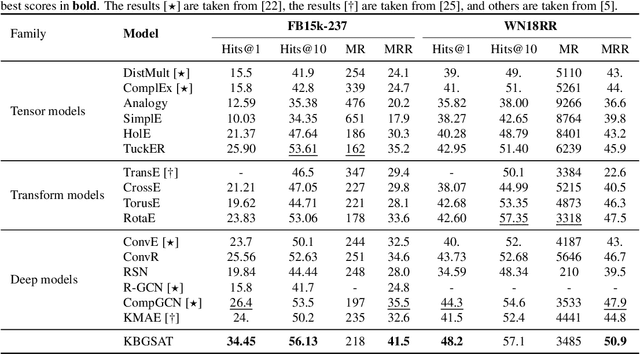
Abstract:The task of link prediction aims to solve the problem of incomplete knowledge caused by the difficulty of collecting facts from the real world. GCNs-based models are widely applied to solve link prediction problems due to their sophistication, but GCNs-based models are suffering from two problems in the structure and training process. 1) The transformation methods of GCN layers become increasingly complex in GCN-based knowledge representation models; 2) Due to the incompleteness of the knowledge graph collection process, there are many uncollected true facts in the labeled negative samples. Therefore, this paper investigates the characteristic of the information aggregation coefficient (self-attention) of adjacent nodes and redesigns the self-attention mechanism of the GAT structure. Meanwhile, inspired by human thinking habits, we designed a semi-supervised self-training method over pre-trained models. Experimental results on the benchmark datasets FB15k-237 and WN18RR show that our proposed self-attention mechanism and semi-supervised self-training method can effectively improve the performance of the link prediction task. If you look at FB15k-237, for example, the proposed method improves Hits@1 by about 30%.
Modeling the Social Influence of COVID-19 via Personalized Propagation with Deep Learning
Jul 26, 2022



Abstract:Social influence prediction has permeated many domains, including marketing, behavior prediction, recommendation systems, and more. However, traditional methods of predicting social influence not only require domain expertise,they also rely on extracting user features, which can be very tedious. Additionally, graph convolutional networks (GCNs), which deals with graph data in non-Euclidean space, are not directly applicable to Euclidean space. To overcome these problems, we extended DeepInf such that it can predict the social influence of COVID-19 via the transition probability of the page rank domain. Furthermore, our implementation gives rise to a deep learning-based personalized propagation algorithm, called DeepPP. The resulting algorithm combines the personalized propagation of a neural prediction model with the approximate personalized propagation of a neural prediction model from page rank analysis. Four social networks from different domains as well as two COVID-19 datasets were used to demonstrate the efficiency and effectiveness of the proposed algorithm. Compared to other baseline methods, DeepPP provides more accurate social influence predictions. Further, experiments demonstrate that DeepPP can be applied to real-world prediction data for COVID-19.
piSAAC: Extended notion of SAAC feature selection novel method for discrimination of Enzymes model using different machine learning algorithm
Dec 16, 2020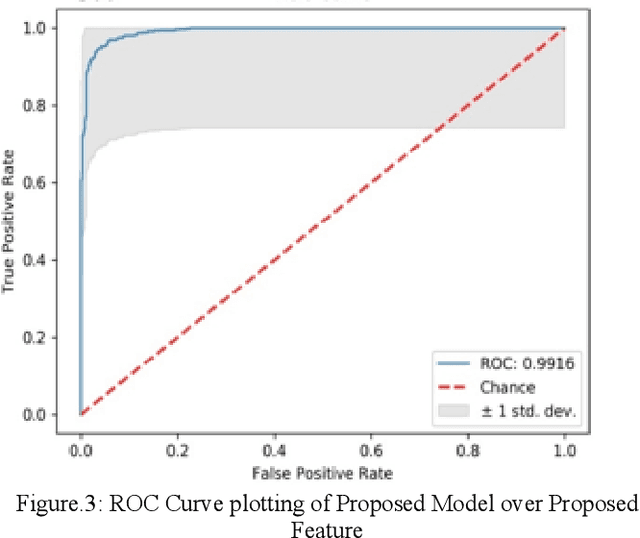
Abstract:Enzymes and proteins are live driven biochemicals, which has a dramatic impact over the environment, in which it is active. So, therefore, it is highly looked-for to build such a robust and highly accurate automatic and computational model to accurately predict enzymes nature. In this study, a novel split amino acid composition model named piSAAC is proposed. In this model, protein sequence is discretized in equal and balanced terminus to fully evaluate the intrinsic correlation properties of the sequence. Several state-of-the-art algorithms have been employed to evaluate the proposed model. A 10-folds cross-validation evaluation is used for finding out the authenticity and robust-ness of the model using different statistical measures e.g. Accuracy, sensitivity, specificity, F-measure and area un-der ROC curve. The experimental results show that, probabilistic neural network algorithm with piSAAC feature extraction yields an accuracy of 98.01%, sensitivity of 97.12%, specificity of 95.87%, f-measure of 0.9812and AUC 0.95812, over dataset S1, accuracy of 97.85%, sensitivity of 97.54%, specificity of 96.24%, f-measure of 0.9774 and AUC 0.9803 over dataset S2. Evident from these excellent empirical results, the proposed model would be a very useful tool for academic research and drug designing related application areas.
Brain EEG Time Series Selection: A Novel Graph-Based Approach for Classification
Feb 09, 2018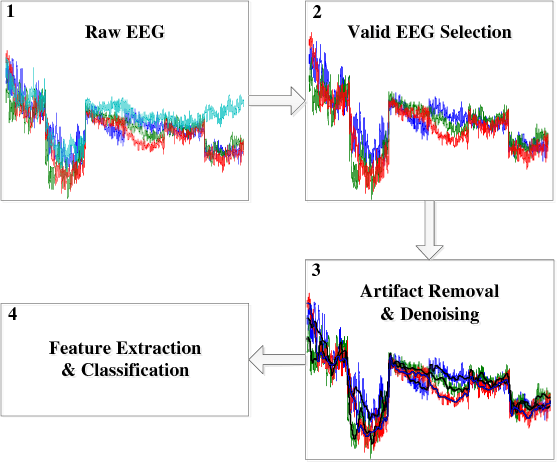

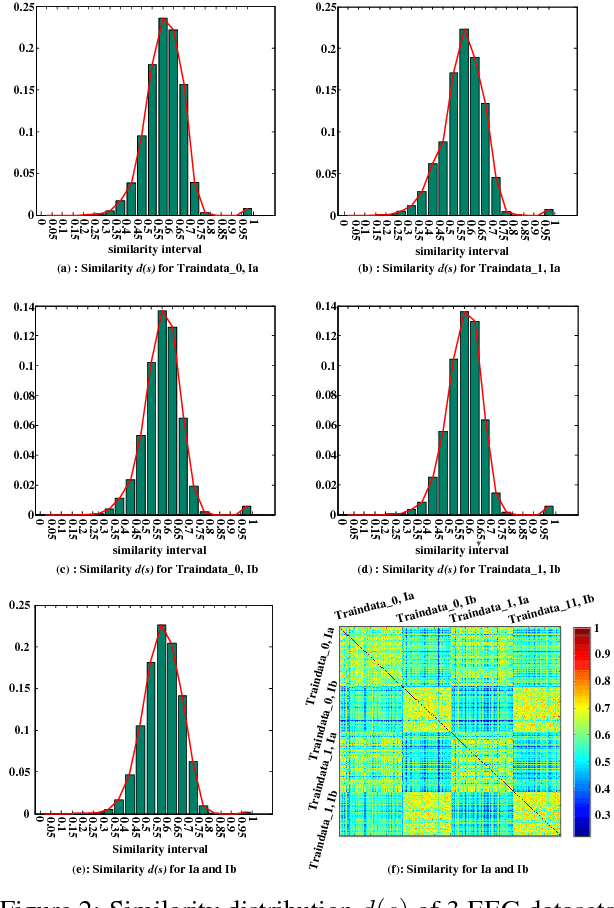
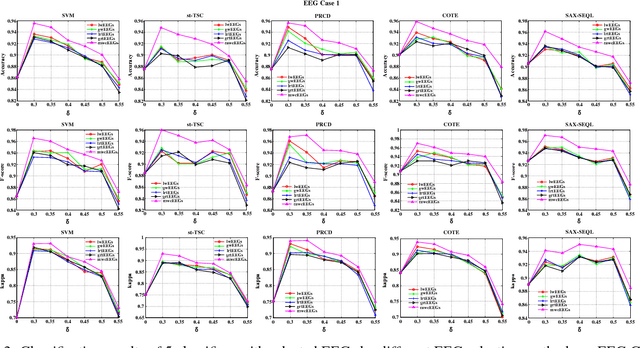
Abstract:Brain Electroencephalography (EEG) classification is widely applied to analyze cerebral diseases in recent years. Unfortunately, invalid/noisy EEGs degrade the diagnosis performance and most previously developed methods ignore the necessity of EEG selection for classification. To this end, this paper proposes a novel maximum weight clique-based EEG selection approach, named mwcEEGs, to map EEG selection to searching maximum similarity-weighted cliques from an improved Fr\'{e}chet distance-weighted undirected EEG graph simultaneously considering edge weights and vertex weights. Our mwcEEGs improves the classification performance by selecting intra-clique pairwise similar and inter-clique discriminative EEGs with similarity threshold $\delta$. Experimental results demonstrate the algorithm effectiveness compared with the state-of-the-art time series selection algorithms on real-world EEG datasets.
 Add to Chrome
Add to Chrome Add to Firefox
Add to Firefox Add to Edge
Add to Edge